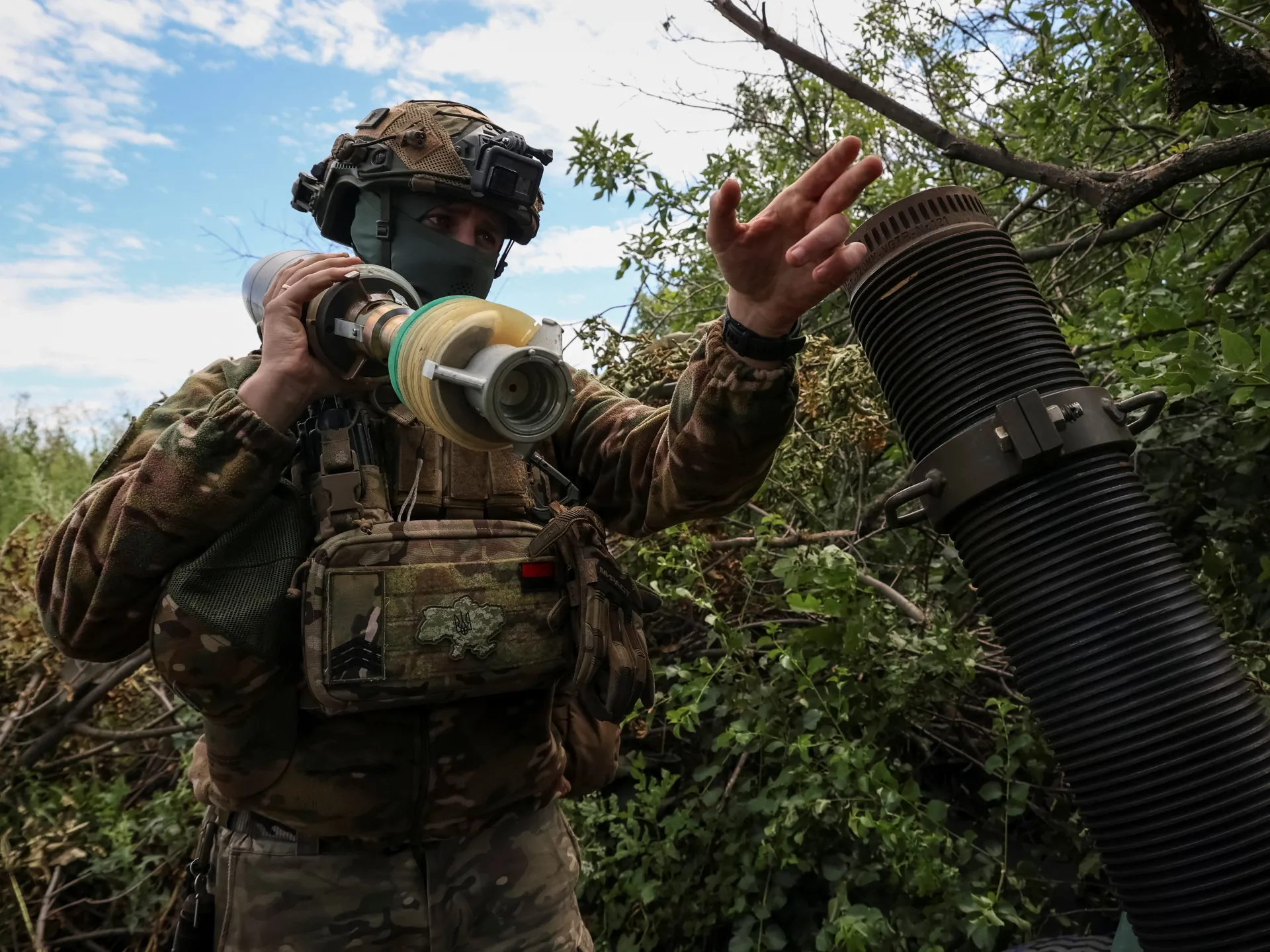The front lines, which symbolized the gloomy, dark winter ahead of Russian resurgence and Kyiv’s increasing losses, are now where Ukraine and its allies had hoped for a summer breakthrough.
Ihor, a commander in the 15th National Guard, joked, “As we like to say in the army, the plan was good on paper, but we forgot about the trenches.” For security purposes, CNN is only utilizing his first name to conceal his identity. He is speaking with CNN while tucked away in the radio room of a command post in the southern Ukrainian city of Orikhiv when he hears terrified sounds.
The radio operator yells, “Heavily injured,” at him. One soldier remains after a Russian drone strikes a sizable gas fuel tank near Russian positions that is used for heating.
“Begin the evacuation, begin the evacuation,” Ihor says, grabbing the handset. Utilise a small car to evacuate… Have you already moved out?
The radio voice responds. They don’t have transportation, so they can’t leave. Ihor’s expression tightens with annoyance as all he can do is wait in excruciating silence for news.
The radio crackles once more after a few minutes. “Already 200” is the military code for “dead.”
Ihor informs his men, “It’s over.” “Don’t rush. We are powerless to assist him. Sergei’s 48-year-old body will now be collected after dark, when conditions are safer.
According to a Ukrainian official in the area, he was one of four Ukrainian soldiers killed that day and roughly fifty that week in this area alone.
Recruiting waves of Russian prisoners
Ihor said, “Every casualty makes a difference.” The morale of all people is impacted. It hurts so much for me.
The fight in winter is hopelessly dismal. Russian drones outnumber Ukrainian ones north of Robotyne, the scene of intense fighting months ago; 40 of the latter’s drones recently hit one Ukrainian trench network in a single day.

The Russian prisoners that the Ukrainians fight against are well-trained, well-armed, supported by armour, and, they believe, frequently given a combination of drugs to help them attack. CNN drone footage of an injured Russian with severed legs and a ghoulish smile on his face, seemingly oblivious to the pain, was shown by Ukrainian soldiers.
According to those battling in the besieged Ukrainian trenches, the use of gas as a weapon is now a threat. According to a Ukrainian combat medic who spoke with CNN, nine incidents involving the dropping of flammable and caustic gas onto Ukrainian lines by drones have been reported in recent weeks, one of which resulted in a fatality. According to soldiers affected, the gas is used to incite fear, and conventional shelling or drone attacks come next.
CNN was informed by a Ukrainian intelligence official that the material the Russians used was CS gas.
According to the US Centres for Disease Control and Prevention, CS gas, also referred to as tear gas and used as a riot control tool, is a chemical compound that can cause temporary impairment of consciousness by irritating the eyes, nose, mouth, lungs, and skin. The United Nations Chemical Weapons Convention forbids the use of riot control agents in hostilities.
In recent months, there have been sporadic reports of Russian soldiers using gas on the battlefield; however, the use of gas near Orikhiv seems to be unusually persistent.
According to CNN medical reports, two soldiers who withstood a gas attack had been poisoned.
One person told CNN, “I saw smoke at first.” “The gas suddenly caught fire as we were running out of the trench. There was fire in the trench. This gas instantly shoots down your throat, burns, blinds, and stops you from breathing. Not even a second was spared to us.
“You inhale it twice, then you cannot breathe,” the second soldier said.
The men claimed to have wounds inside their mouths and throats, as well as burns and welts on their faces. The men’s faces were still red, showing scars from their injuries.
Another indication of the savagery and audacity of Russia’s renewed struggle for the territory it lost is the reported use of chemical weapons on the battlefield. While it now has to defend its meager gains, Ukraine had hoped for more progress towards the Azov Sea during the summer.
“Humanitarian shifts are occurring,” declared Commander Ihor. “[The Russians] have begun producing more attack drones than we do. Yet they treat them poorly, as with a child’s toy.
A number of Ukrainian soldiers described how unsettling it is to see so many Russians at the front. Ihor remarked, “Usually, more meat means more mince,” alluding to Russian generals who recklessly put their men in the “meatgrinder” of the front lines. However, occasionally the machine makes a mistake. And they are successful.
CNN saw a Ukrainian drone unit under Ihor’s command trying to track Russians at a nearby crossroads from a small bunker closer to the front lines. From a trench came two Russian soldiers with a stretcher, probably full of food.
The drone’s operator called in a mortar strike, which seemed to miss, and held the drone back so it wouldn’t be noticed. Then, the drone malfunctioned, most likely due to Russian jamming. According to soldiers speaking with CNN, jamming and the extreme cold can both shorten drone batteries.
Ihor faces numerous difficulties; even transporting the wounded exposes his meagre fleet to Russian drone strikes. A series of grainy drone images show bare tree lines, injured Russian soldiers lolling in a crater, and a landscape so harsh it seems remarkable that any human life emerges from it. These images have the US and EU worried about the funding crisis for Ukraine.
“We won’t succeed without your help,” he declared.



